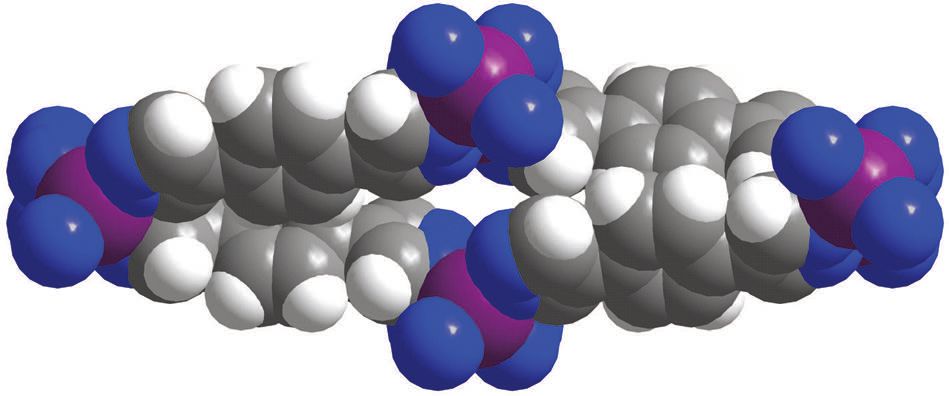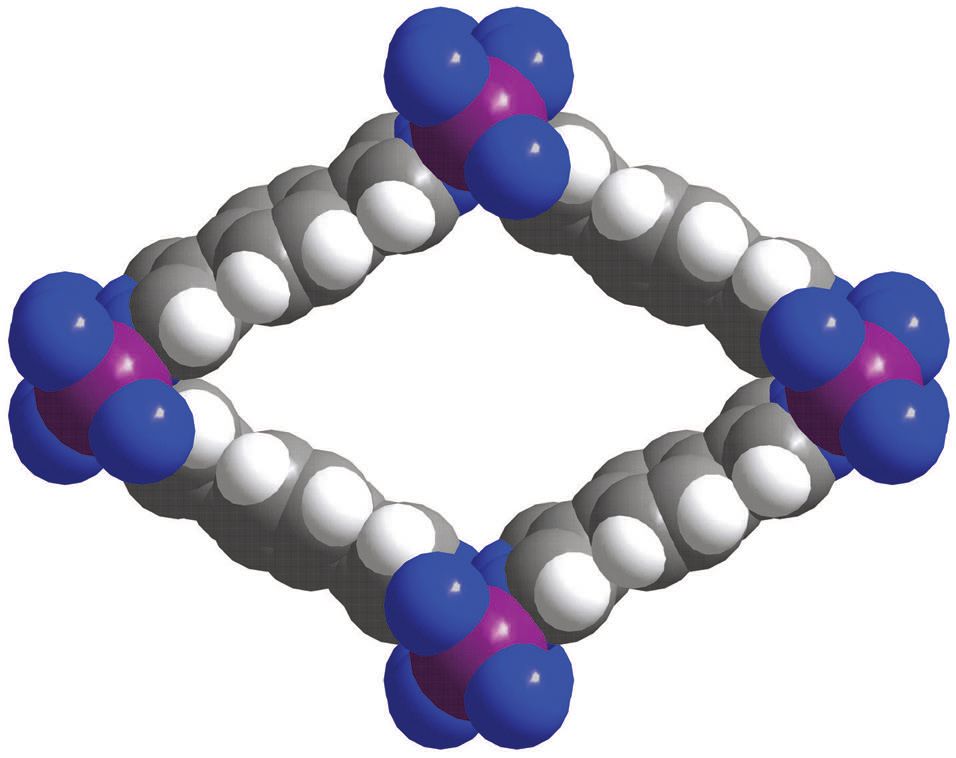More efficient natural gas fuel tank
Dr. Neil Canter, Contributing Editor | TLT Tech Beat January 2016
A new MOF shows an excellent ability to adsorb and release natural gas.
KEY CONCEPTS
•
Natural gas is an attractive fuel for use in automobiles, but there are problems storing it due to the need for bulky tanks.
•
A flexible MOF has now been developed that displays higher natural gas adsorption once a specific threshold pressure is reached.
•
Temperature increases and decreases are lower with the flexible MOF than are seen with conventional technologies facilitating adsorption and removal of natural gas.
NATURAL GAS IS BECOMING MORE VIABLE AS A FUEL FOR AUTOMOBILES because of its increasing availability and low cost. A third attractive feature is that natural gas vehicles generate 13%-21% fewer emissions compared to vehicles powered by gasoline or diesel.
But storage problems currently exist in using natural gas in automobiles. Compressed natural gas needs to be stored in bulky tanks at pressures up to 245 atmospheres to minimize the possibility of leakage. These tanks are bulky, take up space and add extra weight to an automobile at a time when better fuel efficiency has been mandated.
Dr. Jarad Mason, who carried out research in this area as a graduate student at the University of California, Berkeley in Berkeley, Calif., says, “Two challenges are faced in trying to develop a more efficient fuel tank for natural gas. The first is to increase the usable natural gas capacity so that the adsorption pressure is five to 10 times ambient pressure. The second is to deal with the heat effects that occur in filling and depressurization of natural gas tanks. As natural gas is pumped into a tank, the temperature will increase due to heat of adsorption making it harder to put more gas into the tank. In the reverse process, pumping natural gas out of a tank leads to a reduction in temperature (heat of desorption) and increases the difficulty in getting the natural gas out.”
Lower weight plastic resins would seem to be a logical choice to use as a fuel tank, but they suffer from gas permeability problems. In a previous TLT article, a composite prepared from thermoplastic polyurethane and hexadecylated graphene nanoribbons was found to display good natural gas impermeability and better mechanical properties (
1).
Mason indicates that there is need for a material that will pack the methane molecules that make up natural gas as closely as possible. The objective is to adsorb methane at a relatively low pressure such as 35 atmospheres and release it at a pressure between five and six atmospheres, which is compatible with the operation of an engine.
Metal-organic frameworks (MOFs) may provide an answer because they exhibit high surface areas and have been known to effectively adsorb gases. The developer of MOFs, Omar Yaghi, was interviewed about these species in a past TLT article (
2). MOFs are three-dimensional, crystalline structures composed of inorganic units joined together by organic linkers. Yaghi discussed the ability of an MOF based on zinc clusters lined by 1,3,5-benzenetribenzoate units to adsorb carbon dioxide.
A new MOF has now been developed that shows an excellent ability to adsorb and release natural gas.
FLEXIBLE MOFS
A research team led by Jeffrey Long, professor of chemistry at the University of California, Berkeley, has developed a flexible MOF that has the ability to store higher levels of natural gas and to effectively release the fuel when needed. Mason says, “One of the problems with currently used adsorbents is they adsorb natural gas continuously at a decreasing rate as the pressure increases. Our approach is to find a material that can adsorb natural gas at a low rate at low pressures, but then increases uptake in an “S-shaped” manner just before the desired storage pressure is reached.”
The researchers knew that a specific class of MOFs known as flexible MOFs exhibit this characteristic when they undergo a phase transition where a nonporous structure expands to a porous structure once a specific gas threshold pressure is reached. A large number of MOFs were evaluated before the researchers found a flexible MOF that works well with methane.
Mason says, “We determined that a cobalt 1,4-benzenedipyrazolate MOF in a collapsed form (
see Figure 2) will become solvated at a specific pressure as it is filled with natural gas that will convert the material into an expanded form (
see Figure 3). This enables natural gas to literally flood into the flexible MOF and achieves a pressure between 35 and 65 atmospheres.”
 Figure 2. The collapsed form of the flexible MOF is initially filled by natural gas. (Figure courtesy of the University of California, Berkeley.)
Figure 2. The collapsed form of the flexible MOF is initially filled by natural gas. (Figure courtesy of the University of California, Berkeley.)
 Figure 3. Once the natural gas reaches a specific threshold pressure, the flexible MOF converts to this expanded form enabling the adsorption of a higher level of natural gas. (Figure courtesy of the University of California, Berkeley.)
Figure 3. Once the natural gas reaches a specific threshold pressure, the flexible MOF converts to this expanded form enabling the adsorption of a higher level of natural gas. (Figure courtesy of the University of California, Berkeley.)
A key benefit of this flexible MOF is the temperature does not rise as much as methane is charged into the material. The reason is that heat is required in the MOF’s transition from the collapsed to the expanded form. During the reverse process when natural gas is removed from the MOF, the release of heat as the MOF moves from the expanded to the collapsed form helps in the removal of the natural gas.
The researchers modified the flexible MOF by converting it chemically to iron 1,4-benzenedipyrazolate. Mason explains, “We find that the iron-based flexible MOF exhibits the same phase transition, but it requires a higher amount of heat. This means that the heats of adsorption and desorption are further reduced leading to greater natural gas uptake.”
Future work will focus on evaluating other MOFs in an effort to find a material where no heat is released during natural gas adsorption. Mason says, “We also will be evaluating the long-term cycling of the flexible MOFs and determining the influence of contaminants on the process.”
Additional information can be found in a recent article (
3) or by contacting Long at
jrlong@berkeley.edu.
REFERENCES
1.
Canter, N. (2014), “More effective compressed natural gas storage,” TLT,
70 (1), pp. 12-13.
2.
Canter, N. (2006), “MOFs: More effective gas adsorbers,” TLT,
62 (4), pp. 12-15.
3.
Mason, J., Oktawiec, J., Taylor, M., Hudson, M., Rodriguez, J., Bachman, J., Gonzalez, M., Cervellino, A., Guagliardi, A., Brown, C., Llewellyn, P., Masciocchi, N. and Long, J. (2015), “Methane storage in flexible metal-organic frameworks with intrinsic thermal management,”
Nature,
527, pp. 357-361.
 Neil Canter heads his own consulting company, Chemical Solutions, in Willow Grove, Pa. Ideas for Tech Beat items can be sent to him at neilcanter@comcast.net
Neil Canter heads his own consulting company, Chemical Solutions, in Willow Grove, Pa. Ideas for Tech Beat items can be sent to him at neilcanter@comcast.net.